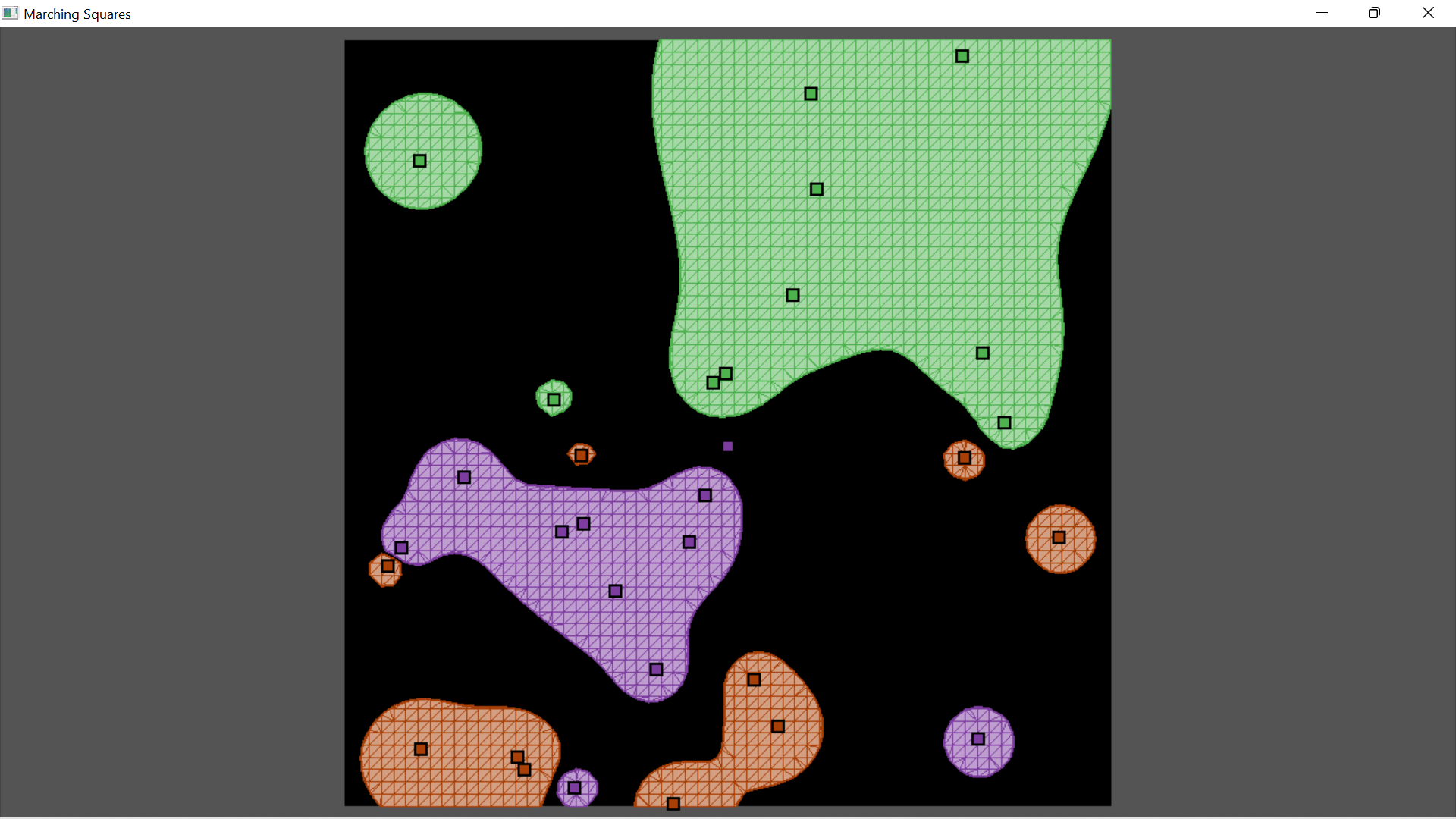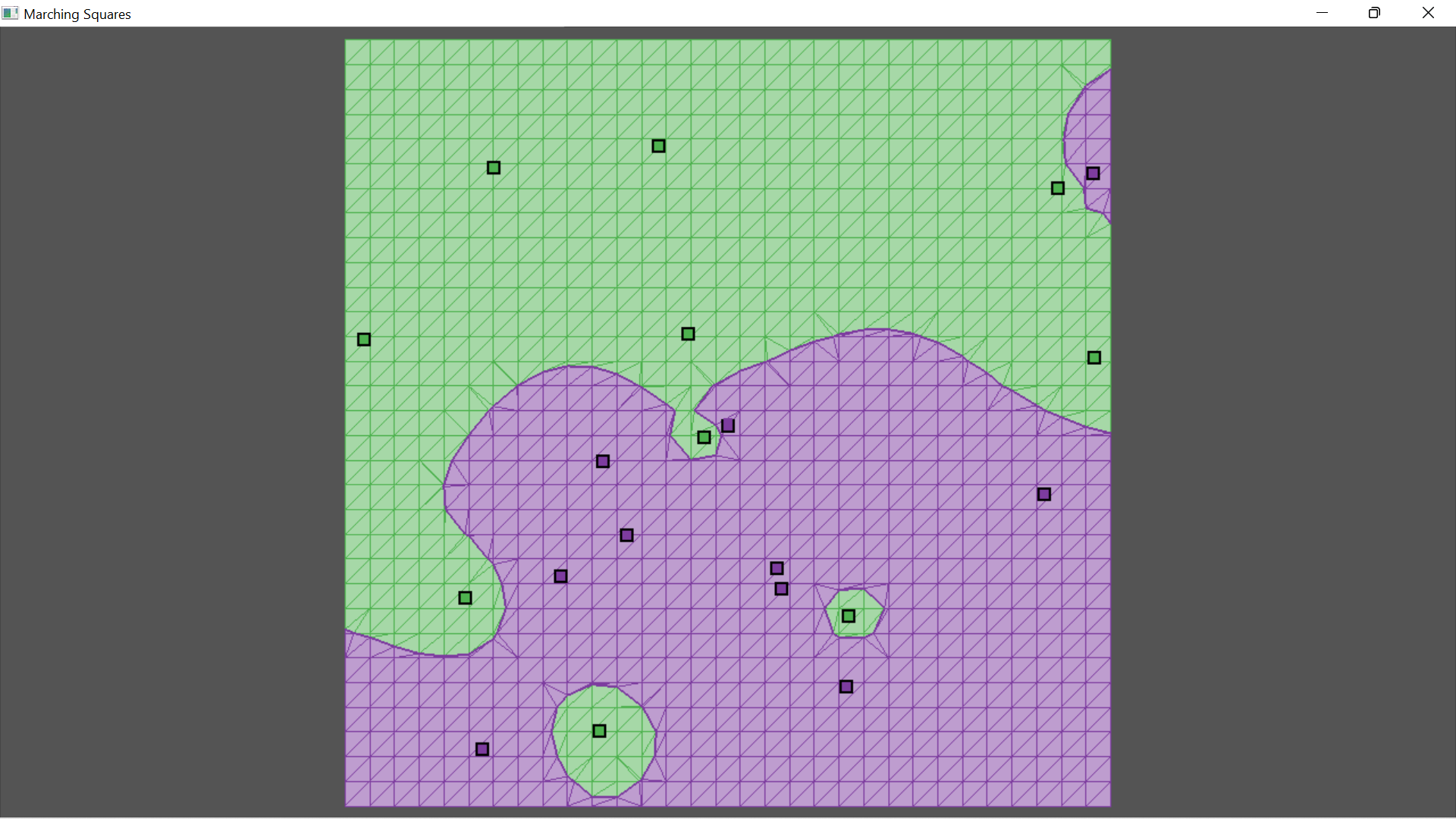I am using Marching Squares to generate line segments (isosurface). As expected, there's a lot of triangles. What is the best way to accelerate ray-triangle intersection? I am looking into decimation, as well as a quadtree, but I have neither implemented yet. What do you recommend?
🎉 Celebrating 25 Years of GameDev.net! 🎉
Not many can claim 25 years on the Internet! Join us in celebrating this milestone. Learn more about our history, and thank you for being a part of our community!
Lots and lots of triangles... how to accelerate ray-triangle intersection?
Decimation would speed up the build of the acceleration structure, but not so much the tracing. Also the decimation step is probably more expensive than the savings. So i would focus on making just an acceleration structure first.
Must popular for tracing is BVH or kd-tree, but octree works too. Maybe a simple regular grid would be enough as well. (Quadtree makes sense only if your triangles mostly form a plane.)
I recommend the BVH, because it has many applications, is flexible and can support dynamic scenes.
Thanks for the info!
I should have posted pictures sooner, sorry.
The first pic is linear separation. The next two pics use curved separation. This has to do with statistics.
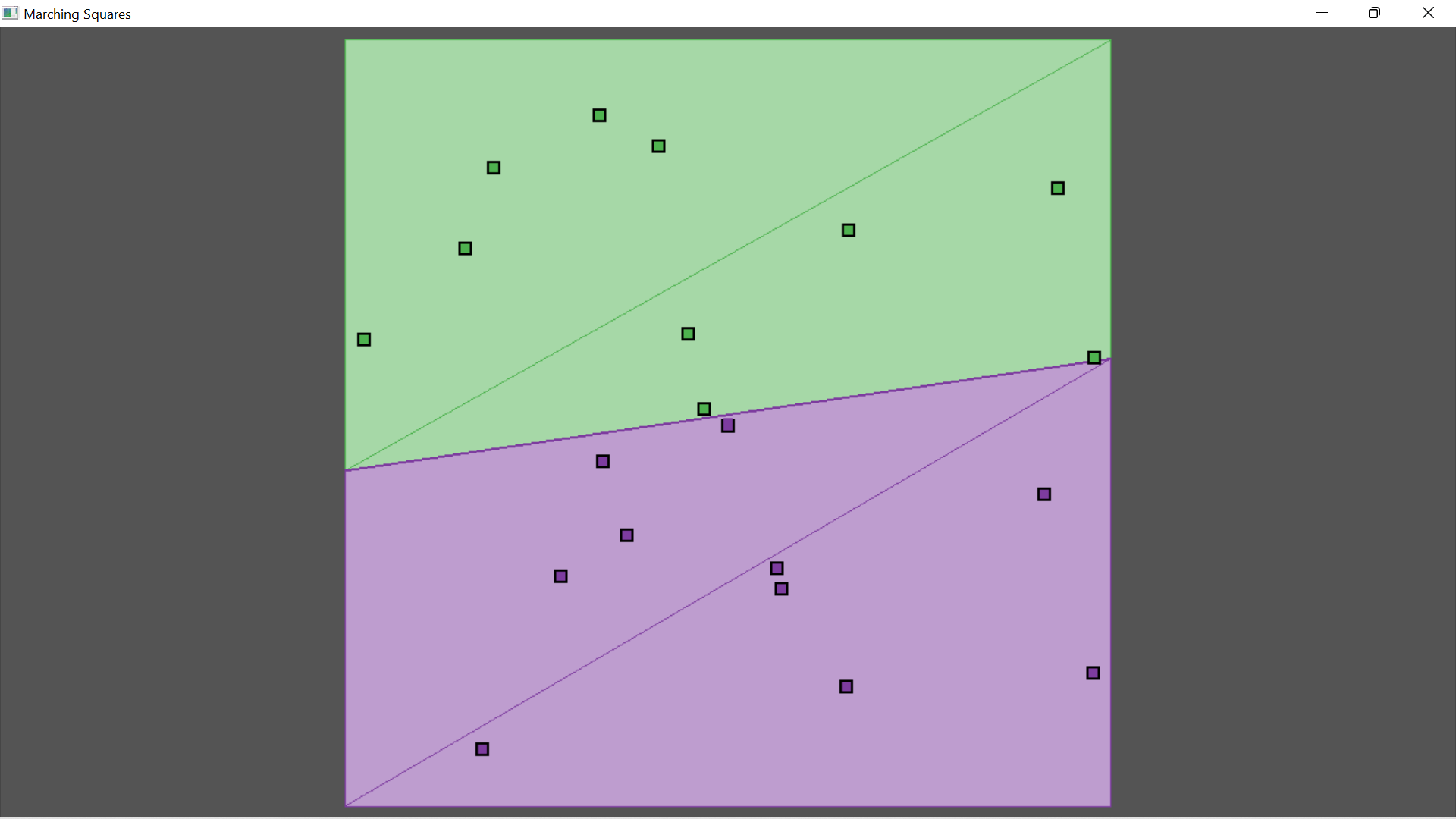
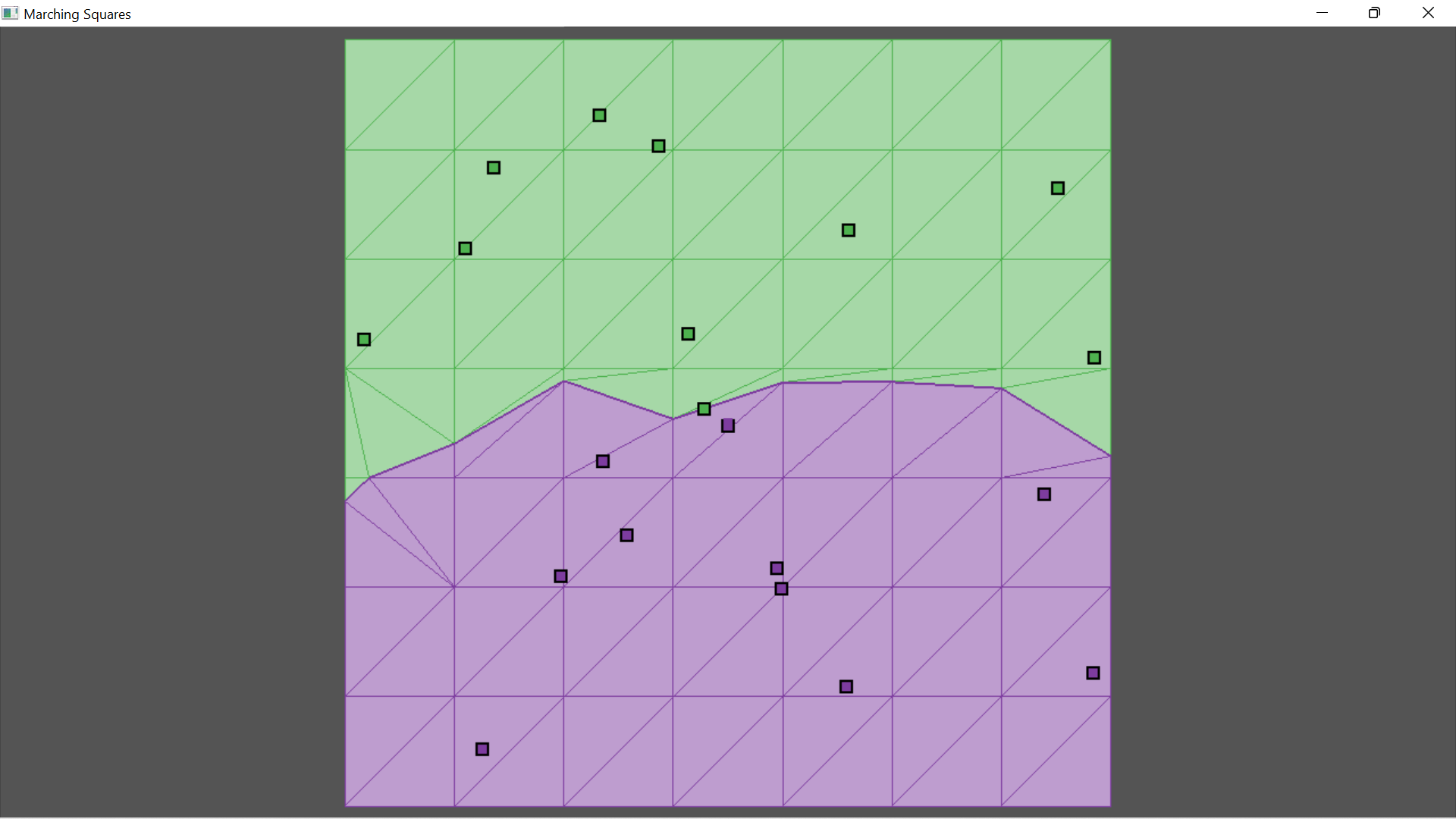
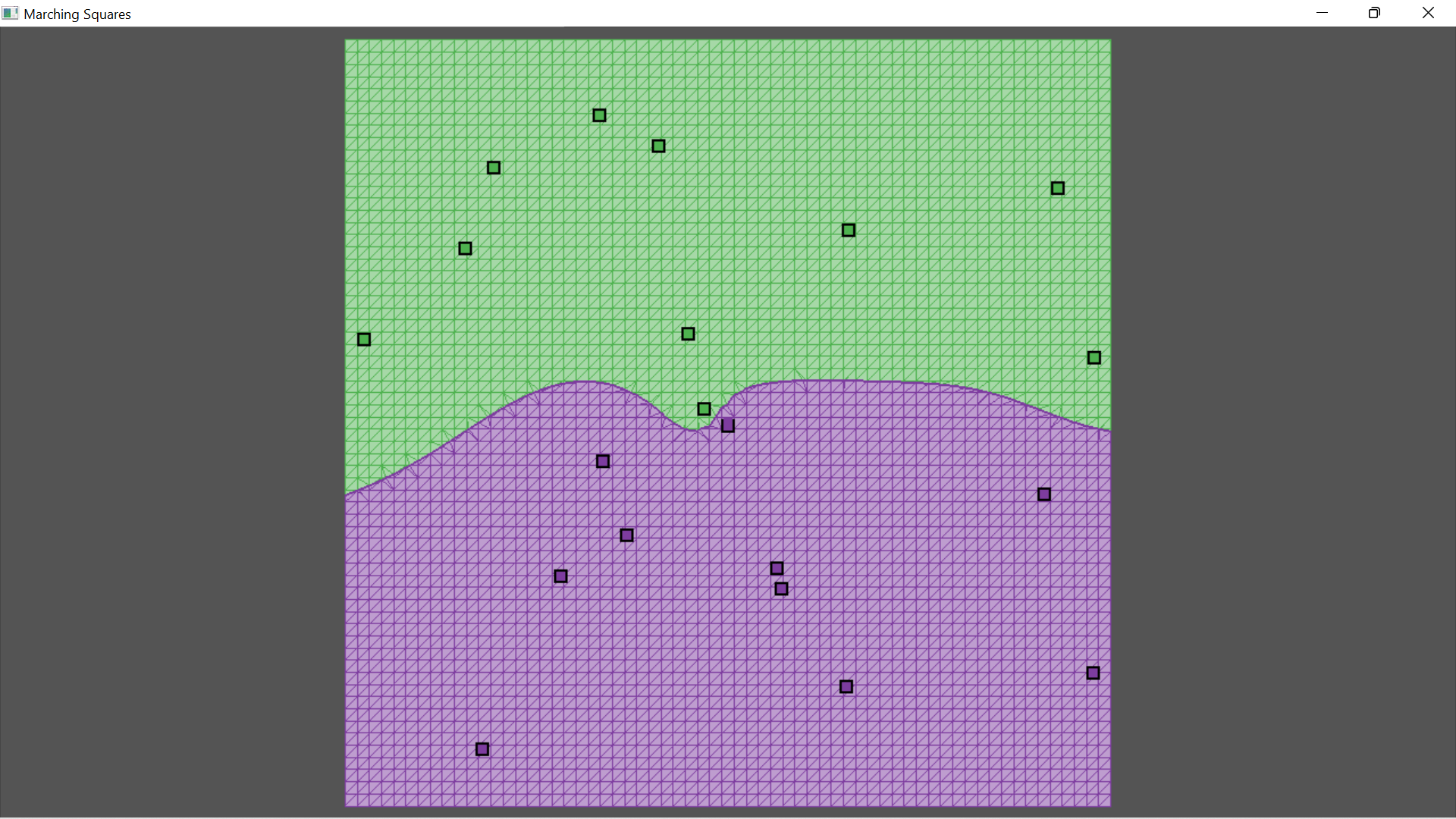
Oh, this looks like a simple texture sample to the initial data would be already enough to answer ‘green or purple’? No ray tracing needed?
Otherwise i'd use a 2D regular grids at the same given resolution of the tessellation. Seems the max triangle count par cell is 4, so you could avoid a compaction step by allowing 4 triangle indices per cell.
Then do a 2D point in triangle test for those 4 trinagles to find the triangle containing the sample. Super fast and easy.
Please allow me to think upon what you've described. I really appreciate you sharing your perspective.
I can share code for a bicubic texture sampler on CPU (On GPU this can be emulated with 4 bilinear samples).
This gives smoother output than bilinear because it combines 3x3 cells. The separations within a single texel would be curved, not straight.
Though, bilinear samples would probably match your triangles exactly. (And i have code for that too.)
I added code to the ray-triangle intersection that I found on stackoverflow. Simply checking against the bounding square takes 1/5th of the time all around. Thank you for the insight. Works good.
float smallest_x = FLT_MAX;
float smallest_y = FLT_MAX;
float greatest_x = -FLT_MAX;
float greatest_y = -FLT_MAX;
if (v0.x > greatest_x) greatest_x = v0.x;
if (v1.x > greatest_x) greatest_x = v1.x;
if (v2.x > greatest_x) greatest_x = v2.x;
if (v0.x < smallest_x) smallest_x = v0.x;
if (v1.x < smallest_x) smallest_x = v1.x;
if (v2.x < smallest_x) smallest_x = v2.x;
if (v0.y > greatest_y) greatest_y = v0.y;
if (v1.y > greatest_y) greatest_y = v1.y;
if (v2.y > greatest_y) greatest_y = v2.y;
if (v0.y < smallest_y) smallest_y = v0.y;
if (v1.y < smallest_y) smallest_y = v1.y;
if (v2.y < smallest_y) smallest_y = v2.y;
// Point lies outside of the triangle bounding square. Abort early
if(orig.x < smallest_x || orig.x > greatest_x ||
orig.y < smallest_y || orig.y > greatest_y)
{
return false;
}I have to resort to a hybrid approach when there are more than 2 class types. There's a lot of black space, which denotes disputed space. So, when on black space, one classifies based on nearest neighbour.
Here there are 3 class types.
